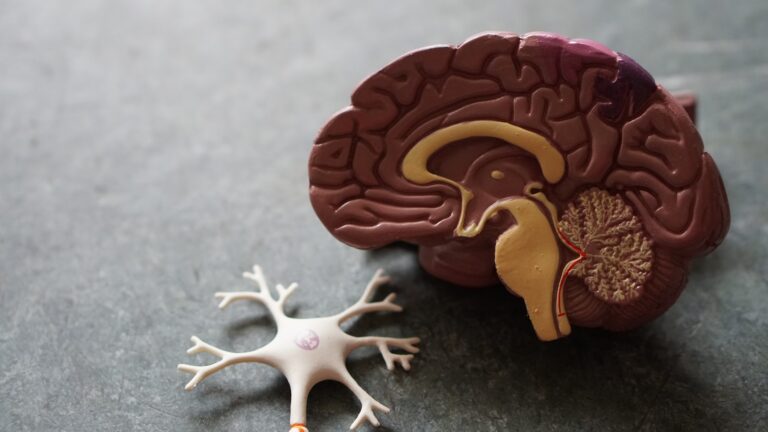The clitoris, the pleasure organ associated with orgasms and female sexual pleasure, is a highly innervated structure. It’s also a very sensitive one.
Several studies have quantified the innervation of the human glans penis, a region that includes the head of the penis. The glans penis is covered by thin keratinized stratified squamous epithelium and contains a large number of free nerve endings (asterisks in Fig 1), genital end bulbs and occasionally Pacinian corpuscles.
How do they work?
Despite its central role in sexual functioning, the human penis has been far less studied than the female vagina. But we now know a lot more about it. The clitoris, for example, contains more than 18 distinct parts — including muscle, nerve fibers and fluid — that work together to create the sensations of orgasms.
The genital tissue of the glans and penis is innervated by the dorsal nerve of the penis (DNP), which is composed of thin myelinated axons that conduct signals from the body’s sensory cells to the brain. These include Pacinian corpuscles, which are responsible for detecting pressure and vibration, and Merkel cells, which detect light touch and texture.
DNP fibers run from the symphysis pubis, the site at which the head of the penis meets the base, up the length of the shaft to the glans. Two populations of DNP axons are present, with one group of nerve fibers traveling along the dorsum of the shaft and abundantly branching within the glans. The other axons travel over the lateral and ventral aspect of the penile shaft, with branching more limited.
The genital tissue receives parasympathetic input from the S1-S4 segments of the spinal cord, which synapse with afferent nerves in the pelvic plexus and give rise to postganglionic parasympathetic fibers that enter the cavernous sinuses. A paired vessel, the deep (cavernosus) artery of the penis, passes through the corpora cavernosa and gives off straight and helicine arteries, which open into the sinusoids of each corpora cavernosa.
What are they used for?
The penis is made up of a column-like shaft called the corpus spongiosum (plural: corpora cavernosa) that surrounds the urethra. The head of the penis, also known as the glans penis, is surrounded by extremely sensitive skin that is filled with nerve endings that respond when it is stretched, rolled or massaged. When stimulated, these nerve endings trigger a chain reaction that results in sexual pleasure for the person receiving stimulation.
The glans penis is innervated by the dorsal penile nerve. This nerve runs mediodorsally along the penis, and bifurcates to a branch that innervates the shaft of the penis, as well as a lateral branch that innervates the glans. The branch that innervates the glans penis contains a mix of somatic and visceromotor (autonomic) fibers.
It has been reported that the glans penis is innervated with about 8,000 nerve fibers. This number is probably based on an old study done on cows, and it has never been independently verified in humans.
A new paper published in the journal PLOS ONEopens in a new window, by Blair Peters of Oregon Health & Science University in Portland, has now done just that. They used diffusible iodine-based contrast enhanced computed tomography (microCT) to visualize and count the different types of nerve fibers in the dorsal penile nerve. They found that the dorsal penile nerve has both somatic and visceromotor fibers, and that the glans penis is mainly innervated by the latter.
How do they get there?
The glans penis has a thick collar of foreskin around it called the prepuce, which contains a dense concentration of nerve endings and helps lubricate the glans penis and provide sensation. Circumcision, a surgical procedure that removes the prepuce and often also the glans penis, prevents these sensitive nerves from doing their jobs and makes the genital area much less sensitive for men.
A study of the glans penis using diffusible iodine-based contrast enhanced microCT (diceCT) allowed researchers to examine the structure of the nerves and other structures in detail. They found that the glans penis is heavily innervated by both somatic and visceromotor (autonomic) nerve fibers. They also found that the glans penis has a large fraction of unmyelinated nerve fibers, which may reduce its sensory transmission speed.
The findings show that the glans penis is more complex than previously thought. Despite being relatively small, it is a highly sensitive organ that can respond to a wide range of stimuli, from mild pressure to clitoral stimulation. Moreover, the number of nerve endings in the glans penis is greater than in other mammalian penises, and it may be important for generating sexual sensations. The findings have significant practical implications, including for a better understanding of the causes of pain in the penis and improving reconstruction after clitoral injuries or restoration following circumcision.
How do they stay there?
One of the most interesting questions about penis nerve endings is how they stay there. Unlike many other body parts, the human penis does not have a thick sheath that encases and protects individual nerve fibers. Instead, a bundle of sensory information-transmitting dorsal nerve fibers surrounds each erectile organ.
The two larger lateral chambers of the erectile organ are called corpora cavernosa, and a spongy end called the glans penis surrounds these structures. The glans penis has a high concentration of nerve endings and is very sensitive. This sensitivity, in part, influences the likelihood of ejaculation. The skin from the shaft of the penis extends over the glans to form a collar called the prepuce (or foreskin). The prepuce contains a dense concentration of nerve endings and lubricates the glans penis. A surgical procedure called circumcision removes the prepuce, removing the lubrication and the high concentration of nerve endings.
The clitoris, the female equivalent of the penis, has also been linked to sexual pleasure. An often-quoted claim is that the clitoris has more than 8,000 nerve endings, about twice as many as found in the penis. This figure has been based on studies of livestock, but scientists have now conducted the first study to count actual nerve endings in human clitoral tissue. The researchers found that the clitoral nerve has 10,281 nerve fibers on average, far exceeding the previous estimate.
See Also:



